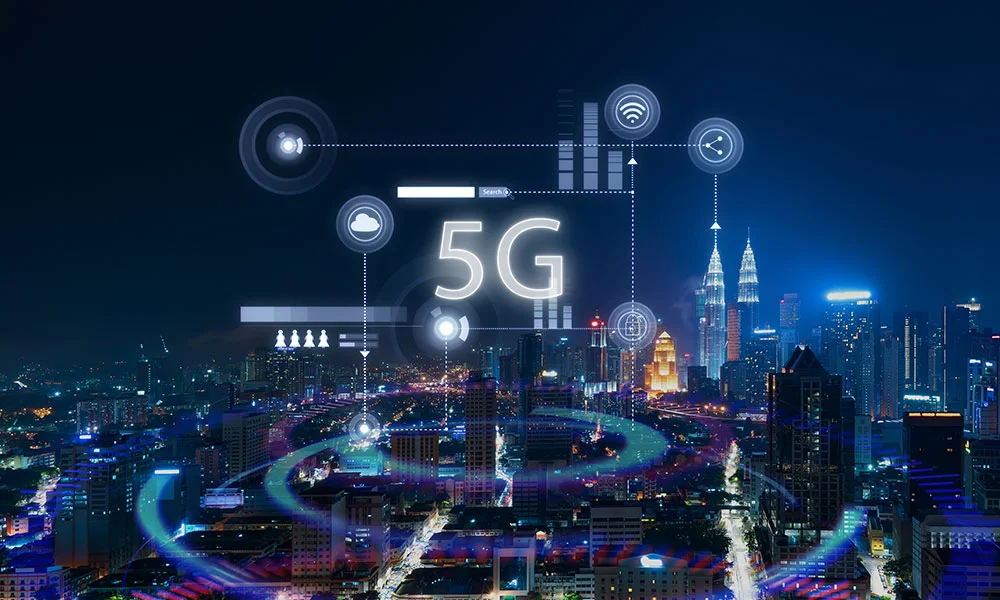The arrival of 5G networks has already begun reshaping the way we connect, communicate, and interact with the world around us. In 2024, as 5G technology becomes more ubiquitous, we are on the cusp of a new era of wireless communication. What’s next for this rapidly advancing technology, and how will it further impact industries, innovation, and our everyday lives? This article takes an in-depth look at the current state of 5G, its transformative applications, the exciting possibilities of 6G, and the challenges that lie ahead.
The Current State of 5G Technology
5G represents a quantum leap forward from its predecessor, 4G, offering up to 100 times faster data speeds, significantly lower latency, and a greater capacity for handling large volumes of data. These advancements are essential for meeting the increasing demands of a connected world. By 2024, 5G will have become more widespread, moving beyond urban centers and into rural areas and underserved regions. As 5G networks expand globally, we can expect this cutting-edge technology to become the backbone of many innovations and services across multiple sectors.
The enhanced speed and reduced latency offered by 5G are not just about enabling faster downloads or streaming ultra-high-definition videos. Instead, they serve as foundational elements for a host of new applications that were previously not feasible. For instance, 5G’s low latency allows devices to communicate with near-instantaneous feedback, opening up new possibilities in fields such as robotics, healthcare, and transportation. As more businesses, governments, and individuals adopt 5G-enabled technologies, we will see significant shifts in the way industries operate and how services are delivered.
Applications of 5G: Transforming Industries
Autonomous Vehicles
One of the most talked-about applications of 5G is in the development of autonomous vehicles. Self-driving cars, trucks, and drones rely heavily on real-time communication between vehicles, infrastructure, and the surrounding environment to operate safely. 5G’s low latency is crucial for this communication, ensuring that data can be transmitted instantly, allowing vehicles to respond to traffic conditions, road hazards, and other dynamic factors in real-time. With 5G, the dream of fully autonomous transportation systems, including driverless cars and freight solutions, becomes a reality.
Smart Cities
The concept of smart cities—urban areas that use advanced technologies to improve the quality of life for residents—has been gaining momentum in recent years, and 5G will serve as the driving force behind many smart city applications. 5G networks will enable innovations in areas such as traffic management, public safety, and energy management. For example, real-time traffic data can be transmitted to traffic lights and navigation systems, reducing congestion and optimizing traffic flow. Additionally, smart grids powered by 5G will allow cities to monitor and manage energy consumption more efficiently, contributing to sustainability goals and reducing operational costs for local governments.
Healthcare: Revolutionizing Medical Services
The healthcare industry stands to benefit greatly from 5G technology. With its high-speed connectivity and low latency, 5G will enable advancements such as remote surgeries and telemedicine. Surgeons will be able to perform operations remotely with the help of robotic instruments that are controlled via 5G networks, allowing them to operate on patients in distant locations with high precision and minimal delay. Additionally, telemedicine services will be greatly enhanced, enabling healthcare providers to offer consultations and diagnostic services to patients anywhere in the world, even in areas with limited access to healthcare facilities.
Internet of Things (IoT) and Industrial Automation
5G will also play a key role in the expansion of the Internet of Things (IoT) and industrial automation. As more devices become connected, the ability to manage and communicate with these devices in real-time becomes increasingly important. 5G networks will support the massive influx of IoT devices, allowing everything from household appliances to industrial robots to communicate with each other seamlessly. In industries like manufacturing, this could lead to the widespread adoption of smart factories where machines and systems autonomously adjust to improve efficiency, productivity, and safety.
The Road to 6G: The Next Frontier in Wireless Technology
While the rollout of 5G is still ongoing, the tech industry is already turning its attention toward the next phase of wireless communication: 6G. Expected to be rolled out in the 2030s, 6G promises to take the advancements made by 5G to an even higher level, offering faster speeds, lower latency, and entirely new capabilities that could revolutionize how we interact with the world around us.
One of the most exciting prospects for 6G is the potential for holographic communication. Imagine being able to attend meetings or interact with friends and family in real-time, not through video calls, but as full 3D holograms. With 6G, this could become a reality, pushing the boundaries of communication even further. Additionally, 6G is expected to support more immersive experiences in areas such as augmented reality (AR) and virtual reality (VR), opening up entirely new avenues for entertainment, education, and work.
The advancements of 6G will not only enhance our connectivity but also unlock opportunities for new technologies and applications that we can only begin to imagine today. As 5G continues to evolve, the groundwork for the next generation of wireless communication is already being laid.
Challenges Facing 5G: Overcoming Barriers to Widespread Adoption
Despite the many promises of 5G, the technology faces several challenges that must be addressed to ensure its widespread adoption. One of the primary hurdles is the cost of building the necessary infrastructure to support 5G networks. 5G requires a dense network of small cell towers, antennas, and fiber optic cables to provide the coverage and capacity needed for high-speed, low-latency communication. This infrastructure is costly to deploy, especially in rural or remote areas, which may delay the rollout of 5G in certain regions.
Additionally, there are challenges related to spectrum availability. 5G networks require access to higher frequency bands, some of which are currently being used for other purposes. Governments and regulatory bodies must work to allocate the necessary spectrum for 5G while managing potential interference with existing services.
Security is another critical concern. As more devices and systems become connected through 5G, the risk of cyberattacks and data breaches increases. Ensuring the security and privacy of users will be a top priority as 5G networks are deployed. This will require new encryption methods, more robust security protocols, and close cooperation between governments, businesses, and telecom providers to safeguard sensitive data and protect users from potential threats.
In 2024, we can expect more concerted efforts to overcome these challenges. Telecommunications companies, governments, and technology providers will continue working together to address the infrastructure, spectrum, and security issues that currently hinder the widespread adoption of 5G.
The Future of Wireless Technology: Endless Possibilities
Looking ahead, the future of wireless technology is incredibly exciting. The advent of 5G has already laid the foundation for a new era of connectivity, and as this technology matures, we will see even more innovative applications that will transform our world. From augmented reality to smart factories and autonomous vehicles, 5G will enable new ways of working, living, and interacting with the environment.
As we move toward the 2030s and the advent of 6G, the possibilities for wireless communication will expand even further. Holographic communication, immersive virtual experiences, and instant data transfer across vast distances are just some of the exciting prospects that lie ahead.
The road to 6G may still be long, but the advancements we make in wireless technology over the next few years will set the stage for even more transformative innovations. The future of wireless technology is bright, and the potential to revolutionize industries, create new business models, and improve the quality of life for people around the globe is truly limitless. As we embrace the exciting possibilities of 5G and beyond, the next decade will usher in a new era of connectivity, one that will change the way we live, work, and communicate forever.



